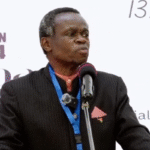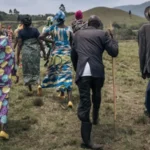The conflict in the Democratic Republic of Congo (DRC) continues to shake the region, especially in the Kivu provinces. Recent battles between the government forces and the AFC/M23 coalition have revealed a surprising new factor: the use of many drones.
Since August 7, 2025, heavy fighting erupted in the Walungu territory of South Kivu. The AFC/M23 coalition managed to take control of several key areas, including Kaniola, Mulamba, Muzinzi, and Ciruko. This move shocked many who thought the government had a stronger hold on these zones.
The government of the DRC denied that it was defeated by AFC/M23 drones. Lieutenant Reagan Mbuyi Kalonji, a military spokesman in South Kivu, called the reports “lies” made up by AFC/M23 to create confusion among soldiers. He assured people living in the hills of Uvira, Fizi, and Mwenga to trust the government forces. He said, “Our soldiers protect the country’s sovereignty and will not give up.”
However, Didier Kabi Bashizi, a government spokesman for South Kivu, admitted that government forces and allies had left some areas to avoid bloodshed.
📰 Also Read This:
This retreat happened because AFC/M23 used many drones and tanks in the fight. Speaking to the French radio RFI, Bashizi said the coalition controlled places like Muzinzi and Ciruko, and that fighters were present in Kaniola and parts of Mulamba.
By August 10, government troops tried to recapture AFC/M23 bases in Walungu. But despite their efforts, they did not succeed. Many local residents fled, hoping to find safety elsewhere. Others chose to stay home despite the dangers.
In North Kivu, the situation is also tense. In territories like Rutshuru and Masisi, fierce battles continue between AFC/M23 and other armed groups. These groups include FDLR and those with similar beliefs such as Nyatura CMC and APCLS.
On August 7, AFC/M23 warned people in some areas of Rutshuru’s Butanda groupement and Bwito sector to leave within five days. They said heavy fighting could break out soon. This warning caused panic and uncertainty for many residents.
At a press conference on the same day, AFC/M23’s deputy leader Bertrand Bisimwa accused the DRC government and its allied forces of attacking their fighters.
He said, “Kinshasa must stop the games. If we decide to fight back, it should not be seen as breaking the ceasefire. Patience has limits. If Kinshasa continues, we will defend ourselves, and they know how capable we are.”
This conflict remains active despite a ceasefire agreement signed on July 19, 2025, by both the DRC government and AFC/M23. The agreement called for a permanent stop to all fighting. Negotiations to finalize peace talks, supported by Qatar, were set to begin by August 8 but have yet to start. The new date remains unknown.
The use of drones in this conflict marks a new chapter in warfare here. These unmanned aerial vehicles give AFC/M23 an edge, allowing them to monitor enemy movements and launch attacks with precision. This technology’s presence has forced government forces to rethink their strategies and, in some cases, retreat to save lives.
The people living in these conflict zones face a harsh reality. Many have been displaced, losing homes and livelihoods. The ongoing violence threatens peace and stability, making the region one of the world’s most fragile.
While the international community watches closely, the future of the DRC’s eastern provinces remains uncertain. Will peace talks bring a lasting solution? Or will the drones continue to fly over battlefields, changing the face of war and leaving more families caught in the crossfire?
Only time will tell.







